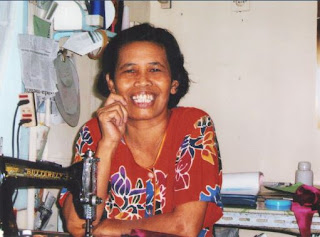In 2012, Jill Forshee, a cultural anthropologist at Colombia College in Chicago, made a trip to Timor Leste to learn more about the country’s textiles. Forshee took photographs of East Timorese cloths (tais) from the collection of the UCLA Fowler Museum in Los Angeles, the Rautenstrauch-Joest Museum in Cologne, Germany, and other collections, hoping to confirm the origin of these cloths. To her surprise, she actually found the weavers who had made two of the tais in the photographs and the daughter of a weaver who had made a third.
One of the weavers that Forshee found was Arestina dos Santos, who told Forshee that she wove the tais in Forshee’s photograph in 1995, and it had been her finest piece. She had never had the time to weave another one like it. Dos Santos, who lost her husband in 1979 and was left alone with four children, sold her masterpiece in 1999 for US$150 in order to pay school fees for her children; it eventually found its way to the Fowler Museum.
 |
| Marobo weaving is among the most ancient in Timor Leste. |
 |
| Bunak weavers excel in the supplementary weft technique. |







